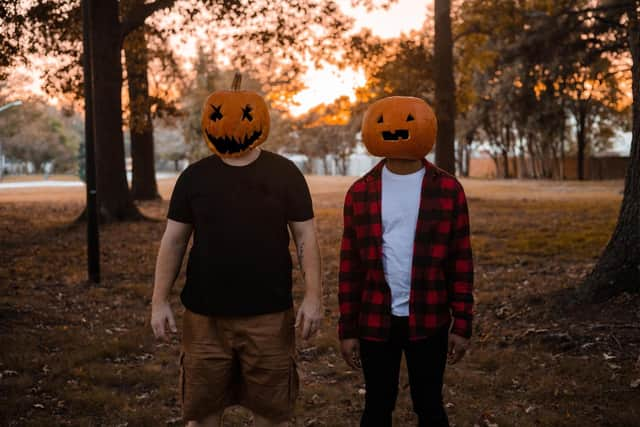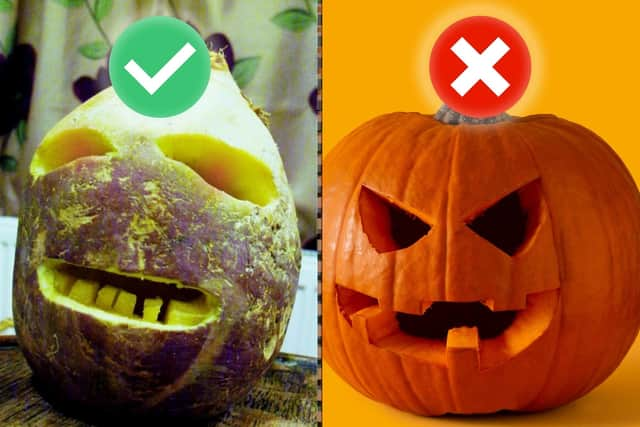Halloween 2023: Where does Halloween come from and why do we celebrate Halloween?
With Autumn finally upon us in the UK we’re seeing evenings become rapidly darker, setting the mood appropriately for the arrival of Halloween.
The celebration, rooted in Celtic history, is most often associated with pumpkins, horror movies and fancy dress parties, but surely there’s more to it than that?
Advertisement
Hide AdAdvertisement
Hide AdHere’s everything you need to know about Halloween; from why we celebrate it to the origins of the festival.


When is Halloween 2023?
Halloween is always celebrated on October 31.
That means that this year the celebration takes place on a Tuesday.
Where does Halloween come from?
According to History.Com, Halloween’s roots are based in the ancient Celtic festival of Samhain (pronounced like “Sah-Win”) which is a pagan celebration that marks the end of summer and the onset of the cold, dark winter.
At this time the ancient Celts, based in regions like Ireland, would light bonfires and wear special costumes to ward off ghosts.
However there is still debate over Halloween’s origins with some believing, for example, that the festival can be traced to Parentalia - a Roman festival held in honour of the dead.
Why do we celebrate Halloween?
Originally, the ancient Celts celebrated their new year on November 1 and Halloween marked this passage from summer to the winter time that was associated with human death.
This culture believed that on the night before the new year, Halloween, the barrier between the world of the dead and the living became weaker and that on this night spirits of the dead returned to Earth.
It was believed that these mythical beings could cause trouble like damaging crops and so the practice of lighting bonfires or wearing costumes to deter the spirits was seen as being important.
Advertisement
Hide AdAdvertisement
Hide AdFurthermore, Celts thought that the presence of these spirits made it easier for Celtic priests or druids to form predictions about the future.
For a community dependent on the resources of the natural world, such predictions acted as a source of comfort before entering the deadly winter months.


Why do we carve pumpkins on Halloween?
The tradition of carving pumpkins or Jack-o’-Lanterns originated in Ireland but it was turnips that were originally used.
The legend goes that it started with a man called Stingy Jack who trapped the Devil many times and only released him on the condition that Jack would not go to Hell.
However, when Jack died, he discovered that Heaven did not want his soul either, so he was doomed to walk the Earth as a ghost in perpetuity.
The Devil gifted Jack a carved-out turnip and a burning lump of coal to illuminate his path.
The locals of this time, in keeping with this legend, would carve scary faces out of turnips in a bid to scare away evil spirits – a tradition of Halloween in Scotland.
What does the word ‘Halloween’ mean?
The word ‘Halloween’ is derived from ‘All Hallows Eve’, which is the evening before the Christian celebration of All Hallows’ Day (or All Saints’ Day) on November 1.
Advertisement
Hide AdAdvertisement
Hide AdHowever, the word is thought to be a Scottish shortening of ‘Allhallow-even’ which is the last night of the year in the old Celtic calendar.
Reportedly, the word was popularised in 1785 by Robert Burns, the famous Scottish poet, as it features as the title of one of his poems.
Who wrote the poem ‘Halloween’?
The iconic Scottish poet Robert Burns wrote the poem entitled “Halloween” in 1785. The poem features in the ‘Kilmarnock Edition’ and it is one of Burns’ longest poems at twenty-eight stanzas, featuring a mixture of English and the Scots language.
Comments
Want to join the conversation? Please or to comment on this article.
